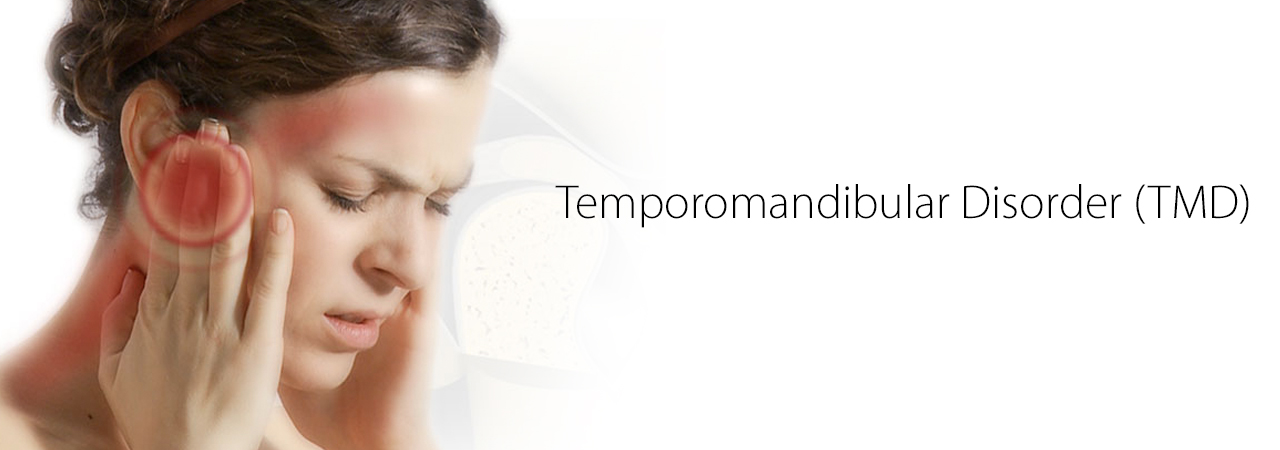
Temporomandibular Disorder (TMD)
The proper term for the TemporoMandibular Joint (TMJ) problem is TMD, it stands for
either Temporomandibular Joint Disorder or Derangement. TMJ acts like a sliding
hinge, connecting your jawbone to your skull. TMD can cause pain in your jaw joint and
in the muscles that control jaw movement.
The exact cause of a person’s TMD is often difficult to determine. Your pain may be due
to a combination of problems, such as arthritis or jaw injury. Some people who have jaw
pain also tend to clench or grind their teeth, but many people habitually clench their
teeth and never develop TMJ disorders.
In most cases, the pain and discomfort associated with TMJ disorders can be alleviated
with self-managed care or nonsurgical treatments. Severe TMJ disorders may require
surgical repair.
It’s important that we first see your condition to determine what needs to be done. If
the suggested treatments don’t provide enough relief, you may eventually be referred to
a doctor who specializes in TMJ disorders.
You may want to prepare a list that answers the following questions:
– When did your symptoms begin?
– Have you ever had this occur in the past?
– Has there ever been any trauma to the head and neck areas? Or the TM joints?
– Does your bite (occlusion) feel even?
– Do you suffer from arthritis?
– Has your level of stress increased recently?
– Do you have frequent headaches, neck aches or toothaches?
– What medications and supplements do you take regularly?
Your doctor may ask some of the following questions:
– Is your pain constant or do your symptoms come and go?
– Does any activity seem to trigger the pain?
– Does your jaw click or pop when you move it? Is that clicking painful?
– Is the popping noise during opening or closing? Or both?
– Is it difficult to open your mouth normally?
There are 8 different types of bite guards that we can fabricate to assist with your TMJ
problem. Variations depends on the location of your pain, and your symptoms. The
Occlusal-splint (bite guard) that is fabricated is a custom made guard that aligns with
your TM joint, and fits your own biting scheme. They are worn over the teeth to support
your TM joint or to give guidance to your jaw movement.
Anterior Bite plane
– Full Splint in Centric Relation (CR) with ramp
– Full Splint in CR flat plane
– Full Splint not in CR with ramp
– Full Splint not in CR with flat plan
– Full Splint not in CR – directive
– Posterior Pivot
– Full Splint soft
There is, however, a group of patients that have a true break down and deterioration of
their TM joints. Splint therapy along with not be able to alleviate their symptoms.
Surgical intervention may be necessary as the last resort.

